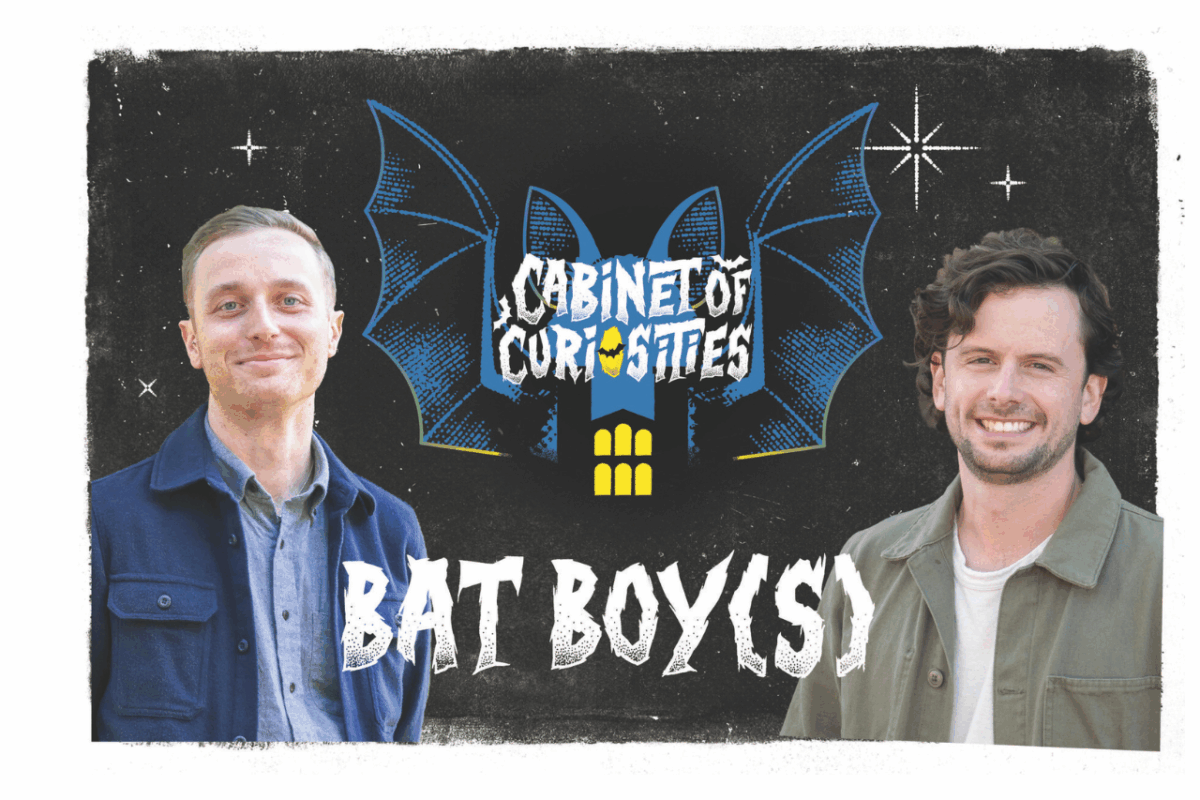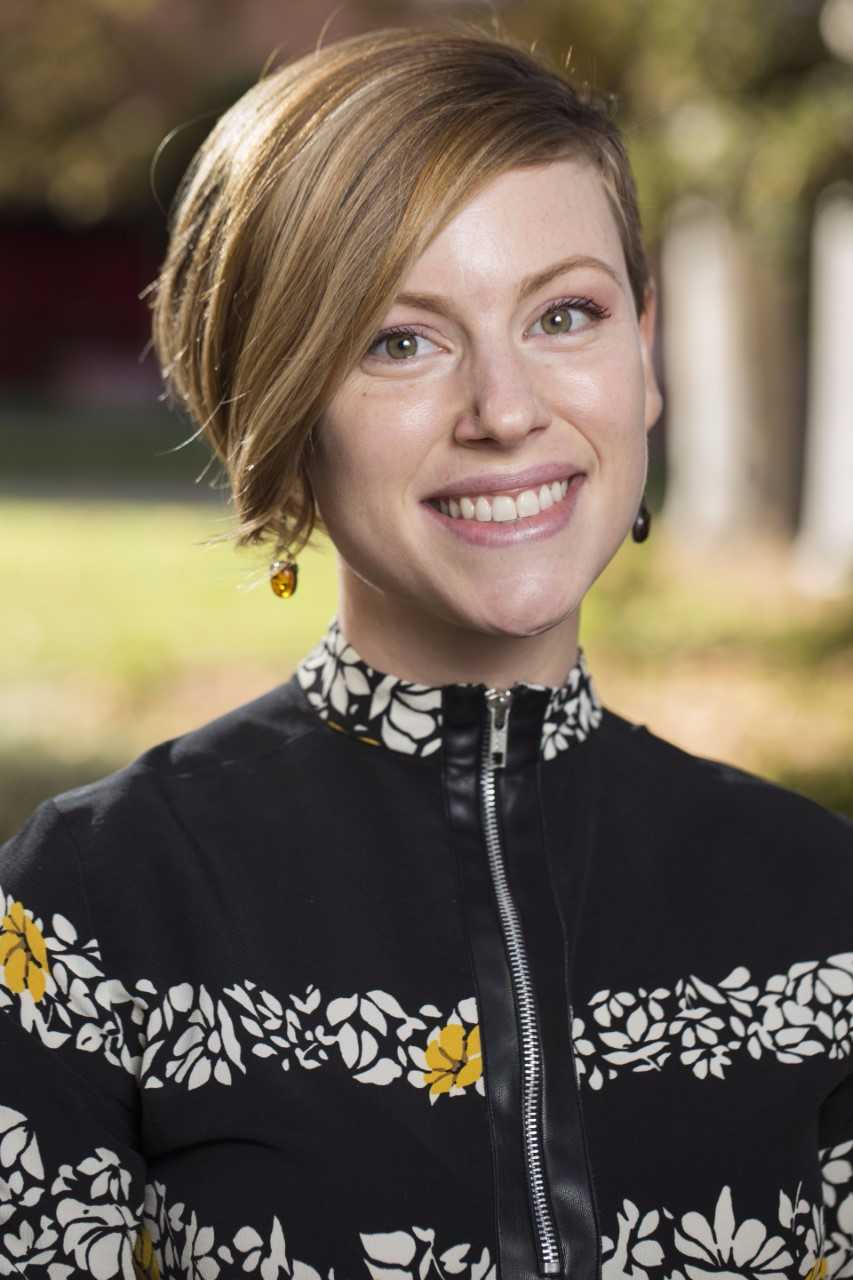
How two Bruins used film and science to reframe a ‘spooky’ species
UCLA College’s new “Cabinet of Curiosities” podcast explores the fang-tastic North-South collaboration
Polyester capes take flight this October as many people across the world, from librarians and dental hygienists to college partygoers, suit up as their favorite superhero or vampire for Halloween season. But according to UCLA’s Joey Curti, a postdoctoral researcher studying bat ecology and conservation, the real superheroes are the original inspiration for these popular costumes themselves.
“Bats are out there every night saving lives and protecting our crops,” Curti said. “Without bats just doing what they do, which is pollination and pest removal for free (by the way), we would be [sicker].”
That spirit of reimagining public opinion about bats inspired Curti and filmmaker and UCLA alumnus Aaron Lemle to team up on “Bat Boy,” a short film that reclaims the misunderstood creatures as ecological heroes. The pair’s collaboration is now featured in the pilot episode of “Cabinet of Curiosities,” a new UCLA College podcast.
How ‘Bat Boy’ took wing
Curti and Lemle met in 2021 through an initiative called “Green the Screen,” a former program at the UCLA Institute of the Environment and Sustainability that paired film students with scientists to create environmentally focused stories. Curti, then a third-year doctoral student, put his name in the hat and was matched with Lemle, a filmmaker from New York City and one of several North Campus graduate students who applied.
“We just kind of immediately clicked,” said Lemle, who completed a directing master’s program at the UCLA School of Theater, Film and Television in 2023. “Joey is so passionate about bats and also so articulate about science, which is not always a given. From our first conversation, I knew this project had potential.”
“Bat Boy” is about a young man on the autism spectrum, played by Domonique Brown (Nexflix’s “Atypical”), who loves bats and is spurred into action when bats near his home go missing under mysterious circumstances. He teams up with a disillusioned UCLA biologist, played by Khandi Alexander (HBO’s “Treme”), to help solve the mystery.
Curti served as the film’s science advisor, helping shape the story and working closely with actors to ensure the ecological details were accurate.
“I was on set for almost all of the film,” said Curti, who is a postdoctoral fellow in UCLA’s La Kretz Center for California Conservation Science. “I had a few of those moments that I think eventually made for a better film — but was maybe annoying in the moment — where Aaron is sweating bullets as the sun’s setting and he’s trying to get the perfect shot, and I’m trying to talk to people about Latin pronunciations.”
Lemle, who studied neuroscience as an undergraduate and previously worked at the National Science Foundation, said the film benefited not only from Curti’s technical knowledge but also his eye for visual storytelling. “As much as it was a science collaboration, it was also an artistic one,” he said. “We both learned from each other.”
Bats take the spotlight as UCLA opens its ‘Cabinet of Curiosities’ podcast
Curti and Lemle’s friendship and creative exchange are now at the center of the pilot episode of “Cabinet of Curiosities,” a new podcast from the UCLA College in partnership with UCLA Newsroom. The show delves into the stranger corners of academic research at UCLA — from the unexpected to the delightfully macabre.
Bats are a fitting theme to kick off the project. The winged creatures have long been cast as the ghouls of the animal kingdom — spooky, disease-ridden, even vampiric. But to Curti, that reputation is both unfair and harmful.
“I love ‘Nosferatu’ as much as the next person,” Curti said. “But the reality is that less than 1% of all bat species drink blood. There are only three species of vampire bats, and only one drinks mammal blood. If you’re not a cow or a peccary in Central America, you’re probably safe.”
More than 70% of bats worldwide are insectivores, and in Los Angeles County, all 17 documented bat species feed on insects. That includes common urban species like the Mexican free-tailed bat, which Curti says is capable of flying up to 99 mph while using a combination of echolocation and eyesight to hunt.
Bats’ echolocation abilities are rivaled only by their agility in flight — not to mention their cuteness, which “Bat Boy” lovingly captures in a key scene between the protagonist’s skeptical grandmother (Yvette Freeman) and a bat named Hazel. Hazel, an educational animal from L.A. Bat Rescue, quickly won over Freeman (“Orange Is the New Black”).
“By the end of the shoot, she was fully on ‘Team Bat,’” Lemle said. “It happened in real time.”
That kind of transformation is exactly what Curti and Lemle hope for. Curti often leads bat walks with the public, using an ultrasonic microphone to detect and identify bat calls overhead. Listeners of the podcast will get to hear audio from one of Curti’s recent events at UCLA’s Stunt Ranch Reserve.
“It blows people’s minds when they realize how many bats are flying above their heads in urban areas,” Curti said. “In downtown L.A., even in Koreatown where I live, they’re everywhere.”
One of his goals is to debunk long-held myths. No, bats are not blind. No, they don’t want to get tangled in your hair. And no, they’re not supernatural creatures of evil. “They’re just mammals like us,” he said. “Really impressive, ecologically critical mammals.”
Curti and Lemle’s collaboration also highlights what’s possible when North Campus meets South Campus — and when disciplines as different as film and conservation science find common ground.
“It’s time that people start to appreciate bats for all the good things that they do for us,” Curti said. “We need bats — and bats need us to make their habitats and, frankly, to stop destroying them.”
Upcoming bat education programming led by Joey Curti:
Event details
What: “2-Part Native Bats of Southern California with Joey Curti”
When: Thurs, Oct. 16 (online) & Thurs, Oct 2 (in-person), 7:30 p.m.
Where: Zoom link and bat walk location to be emailed after the first session.
Activities: Attend an eye-opening online presentation as Joey Curti, bat expert and postdoctoral fellow at the UCLA La Kretz Center for California Conservation Science, discusses the diversity of bat species living in Los Angeles. The second portion will consist of a nature walk by the L.A. River from dusk to dark.
RSVP is required. Register on the Theodore Payne Foundation for Wild Flowers and Native Plants website.
Event details
What: “All About Bats”
When: Saturday, Oct. 25, 10 a.m. to 11 a.m.
Where: Descanso Gardens, 1418 Descanso Drive
La Cañada Flintridge, CA 91011
Activities: Join Joey Curti to learn more about Los Angeles native bat populations, their diversity and ecology, what services they provide and what you can do to support them. Come see why they’re not so scary after all!
Registration: Included with garden admission or membership





